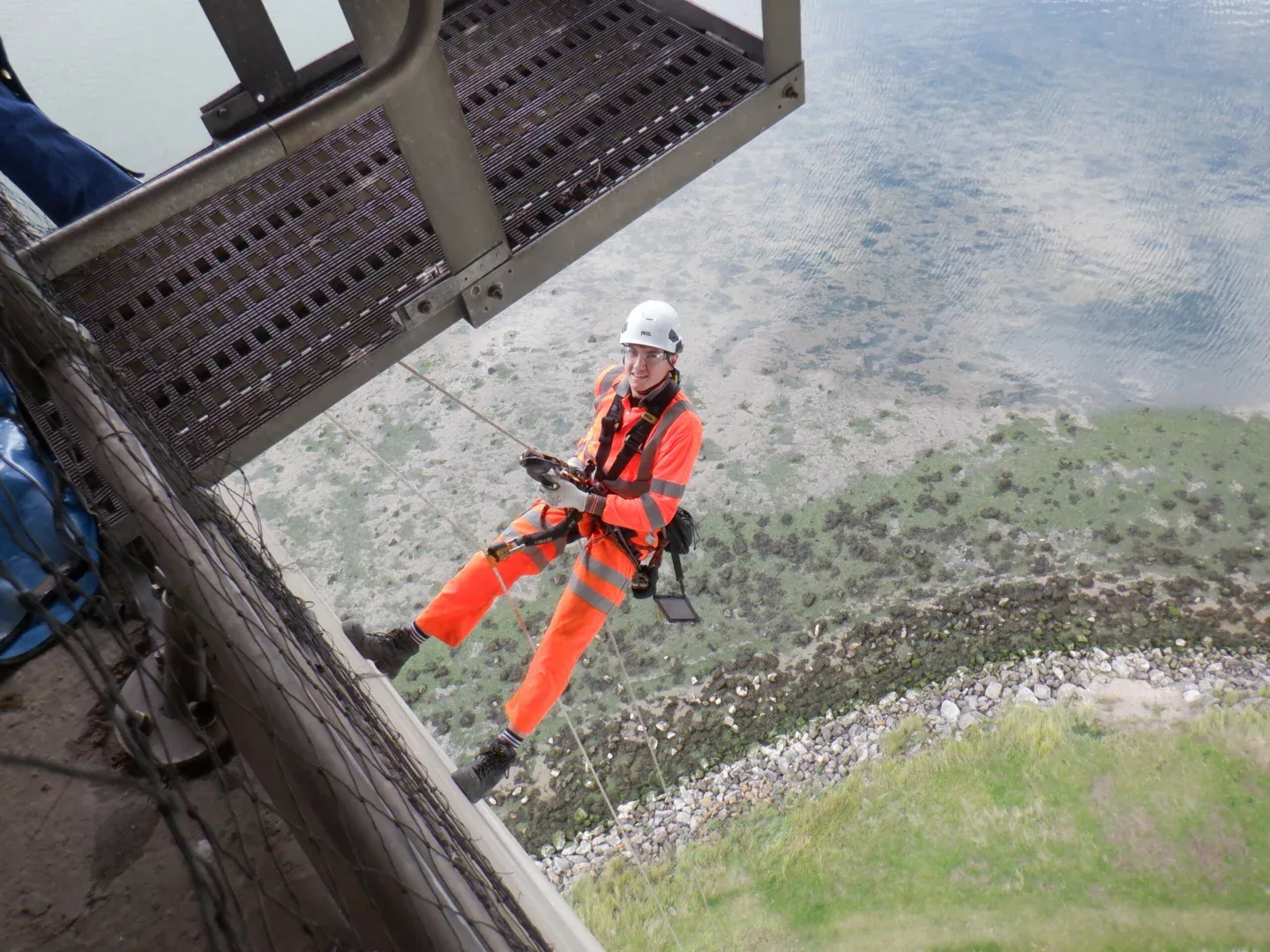UK specialist access company Up and Under has abseiled the equivalent vertical distance of four miles at Ipswich’s Orwell Bridge as part of an inspection project which took place across day and night shifts to complete vital inspection work while avoiding disruption to motorists and pedestrians.
The bridge, built in 1982, carries the dual two-lane A14 Ipswich southern bypass across the River Orwell and provides the main access to the port of Felixstowe. National Highways standards require the bridge to be closely inspected at least every six years. Up and Under is providing inspectors with data on its condition and will produce a report for National Highways.
Managing Director Simon Enderby said: “I am extremely proud of the teams we have working on this project. They have been working hard in all weather conditions to minimise disruption. Their specialist access skills have certainly been put to the test to cover all areas of this complex and difficult to access bridge.
“The size of the bridge and the proximity of the river/estuary beneath it means that specialist skills are required to comprehensively assess all parts of the structure. For our teams, this involves skills such as rope access and confined spaces.”
The company has given some details of the work:
- Bridge dimensions – 1287m long (x2 box beams) x 24m wide
- Working to a height of more than 50m
- 18 spans of between 46-190m in length
- Two prestressed independent concrete box girders, each carrying one carriageway of the trunk road
- Tower scaffolding of nine to 10m in place to access the internal deep haunch sections of the spans
- The piers range in height from 20m to 45m with two piers per support
- Combined total in excess of four miles (6.5km) of vertical abseils to cover the surface of the piers.
- In total across phases one and two, four teams working 1300 person hours will complete the project.
Mr Enderby said: “The deep deck sections of the main span can be especially difficult to access with them being outside the reach of conventional access, including cherry pickers. As a result, we created a specialist truss support system during previous inspections and this allows our teams to access the areas between the decks using rope skills. We used this system again to allow full access for the inspection.”
The company was also aware of the presence of nesting falcons in one area of the bridge which required the programme to be planned around the nesting season.
Mr Enderby added that the project was spilt into phases to minimise disruption. In phase one, completed between 10-23 August, the Up and Under team inspected the bridge piers using its specialist abseiling teams with an internal inspection carried out using scaffold towers. All this work was scheduled to be completed without the need to use traffic management on the bridge to avoid disruption to the travelling public.
In phase two, carried out in mid-September, Up and Under inspected the external deck elements of the bridge’s main box beams.
He said: “This required specialist rope access skills with ropes tensioned around the structure and an access truss suspended between the two decks. These works were undertaken during night shifts to reduce the impact on the travelling public. We also increased team sizes to reduce the works programme from three weeks, when undertaken six years ago, to two weeks. Again, in an attempt to reduce disruption.”
National Highways’ Head of Planning and Development for the East Region, Steven Thulborn, commented: “We know what a vital artery the A14 Orwell Bridge is to the region and that is why it is so important to ensure its condition is regularly checked.
“Maintaining the strategic road network is a huge undertaking, and the survey work which supports that can often go largely unnoticed. When this takes place on landmark structures like Orwell Bridge it offers a striking reminder of what goes into keeping the country moving.
“As with all our planned road closures we do all we can to keep them to a minimum and avoid disruption to road users. During this inspection period I am delighted that through a combination of innovative working and meticulous planning, it was only necessary to close each carriageway for five week nights. This is in contrast to the last inspection when the A14 was closed for three weeks. This has meant less inconvenience for those who rely on the bridge, and I would like to acknowledge the skill of those undertaking the survey work for carrying out such a challenging task professionally and on a reduced timetable.”
(Picture – RSK)






















